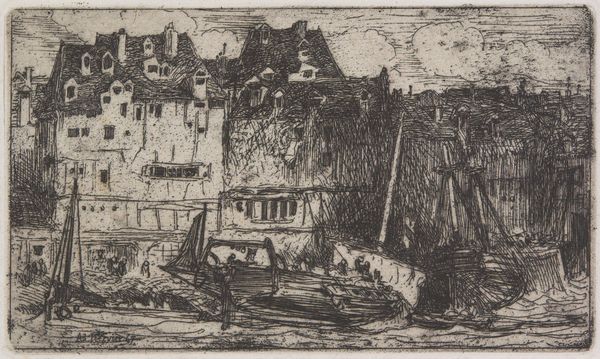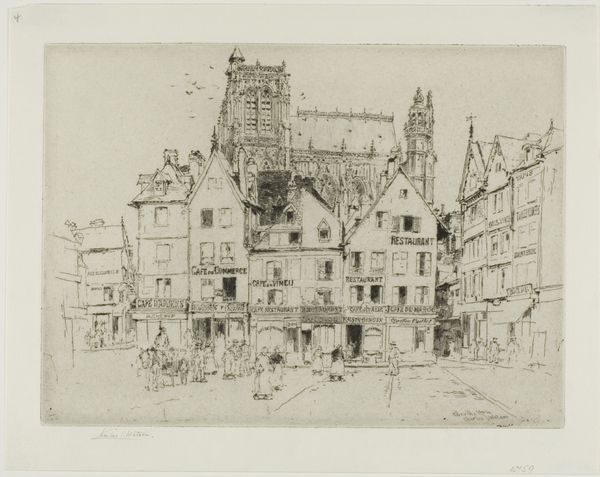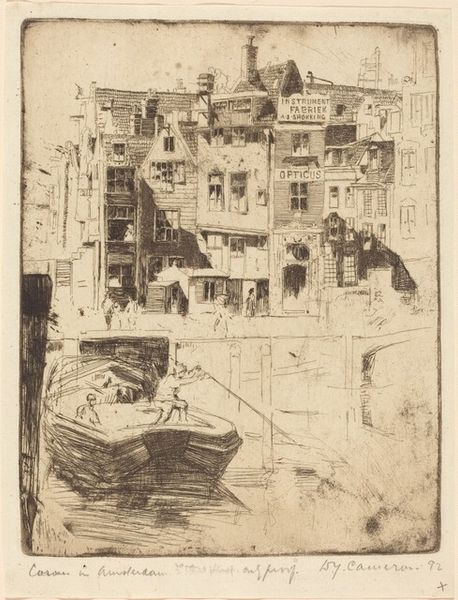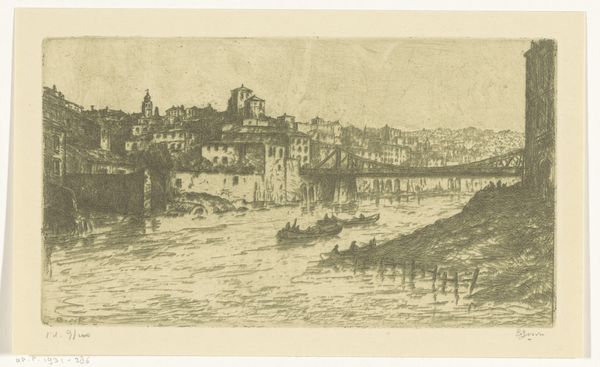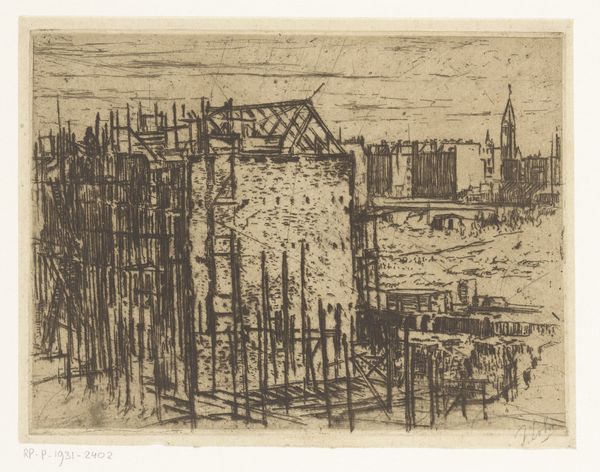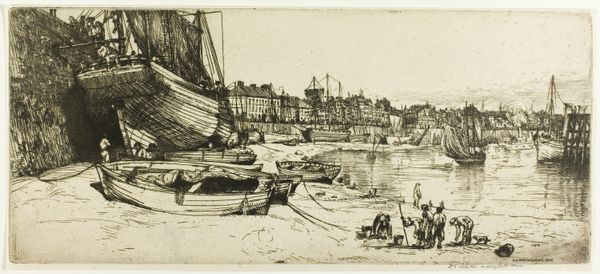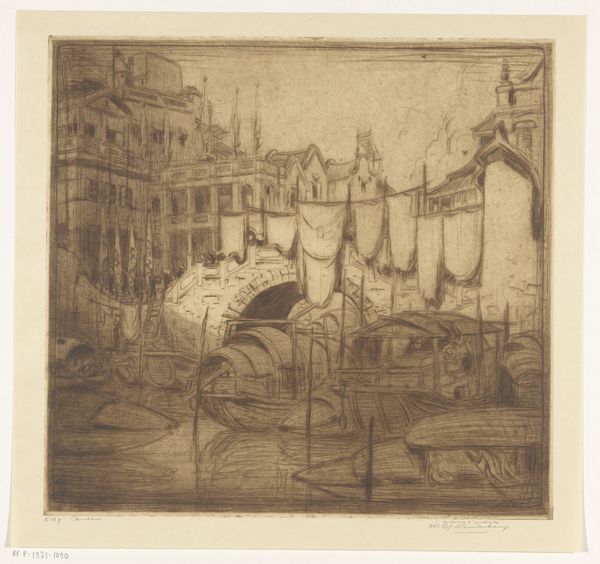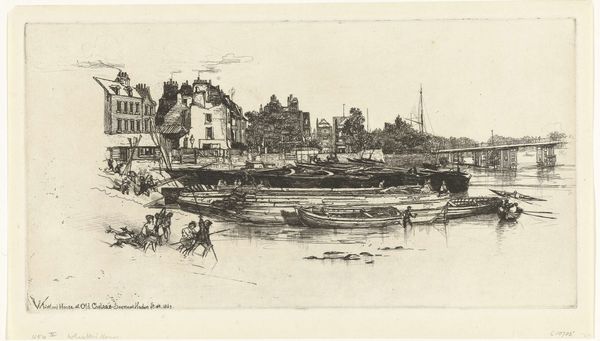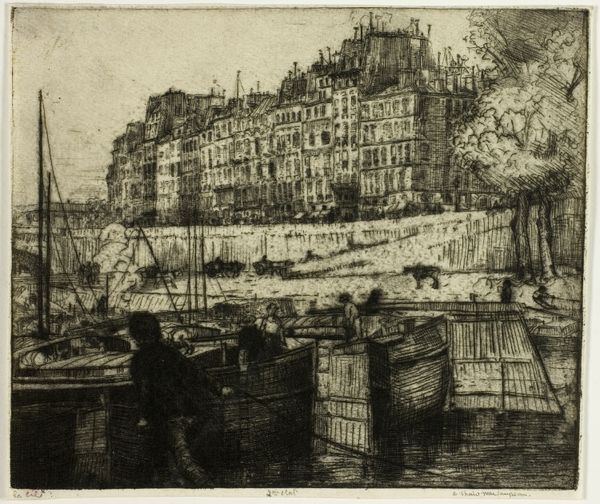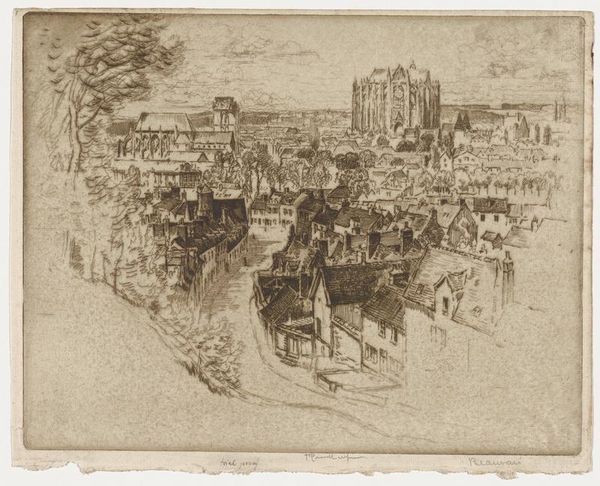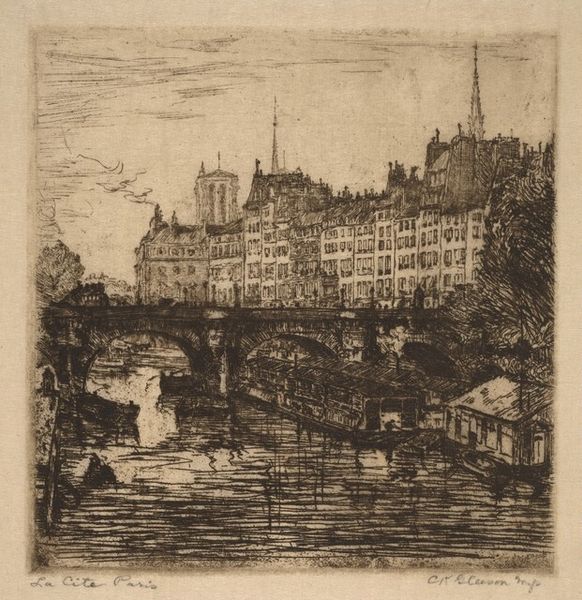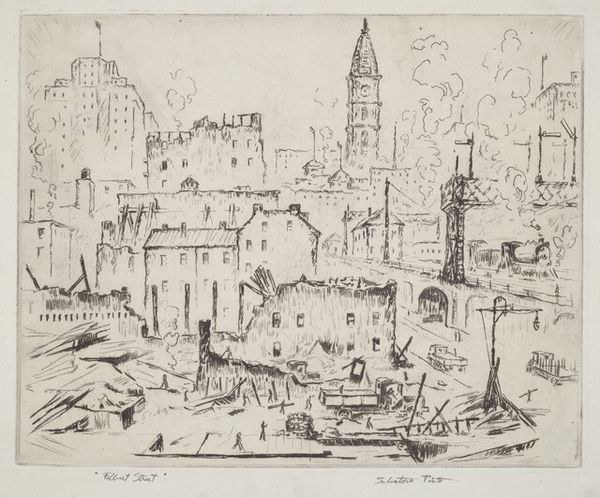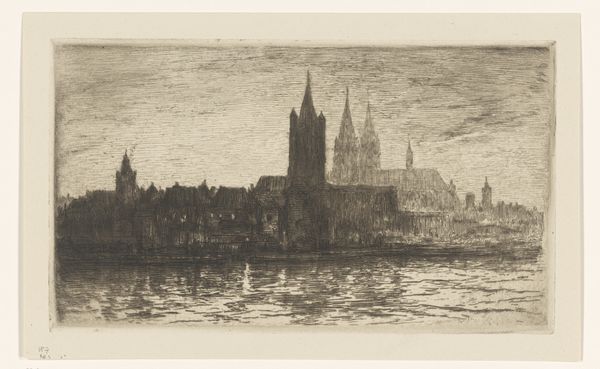
Dimensions: 219 × 237 mm (image/plate); 230 × 245 mm (sheet)
Copyright: Public Domain
Curator: Here we have Donald Shaw MacLaughlan's "Quai de l'Hotel de Ville, Paris," an etching dating back to 1900. It resides here at the Art Institute of Chicago. Editor: It feels like looking into a memory, doesn't it? Muted, slightly out of focus, with all these tiny details that almost get lost until you lean in. Very impressionistic. Curator: MacLaughlan, as an American artist working in the late 19th and early 20th centuries, really engaged with the legacy of European printmaking. This work exemplifies the influence of the Etching Revival on turn-of-the-century American art. You see this resurgence of interest in traditional techniques being applied to modern subjects. Editor: The details really do draw me in, though. Look at how he suggests movement on the river with these swift, confident lines, and then look at how deliberately he renders the architectural details behind it all, the precise window patterns. It feels like two different realities coexisting. What does this reveal, historically, do you think? Curator: The division you see between these areas within the frame certainly speaks to social hierarchies evident in modern Paris, and is reminiscent of similar depictions during Haussmann's construction boom. Note, though, how MacLaughlan makes these societal divides so evident with his attention to these workers in the foreground; perhaps suggesting his own place as an outsider observing Parisian society. Editor: That's a thought that occurs looking at all those stacked houses, isn't it? One on top of another, another and another, with a life contained inside of each. Curator: The urban landscape presented a complex subject for artists in this era, forcing them to reconcile aesthetic ideals with the realities of a changing society. How to both glorify and critique modern life, especially the lives of the laboring class and immigrant communities who resided within? Editor: It makes you wonder about the conversations that aren’t happening between those houses. A lovely piece that evokes a profound quietude. Curator: An insightful reading indeed, one that highlights the enduring power of images to evoke historical reflection. Thank you.
Comments
No comments
Be the first to comment and join the conversation on the ultimate creative platform.
